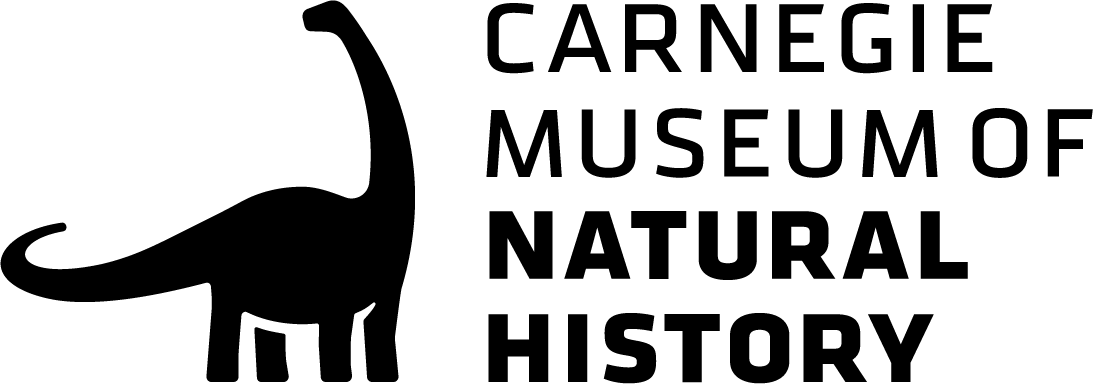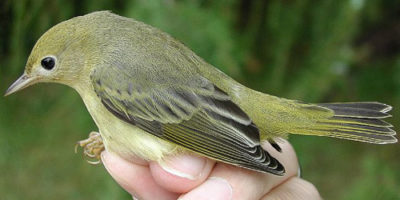
Yellow Warbler, Unknown Subspecies
A hatching year female Yellow Warbler (Dendroica petechia, subspecies?) banded on September 19, 2002.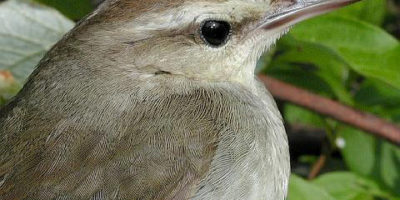
Swainson’s Warbler
The Swainson’s Warbler is a breeder in the southeastern United States that occasionally shows up in Pennsylvania. In total, 6 individuals have been banded at Powdermill, with 2 of those occurring in 2010.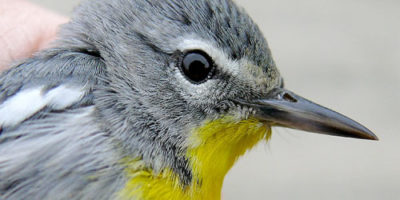
Probable Sutton’s Warbler
Sutton's Warbler that was captured during spring 2008. This is a well documented hybrid between the Northern Parula and the Yellow-throated Warbler, and this individual is the only one that has been captured at Powdermill.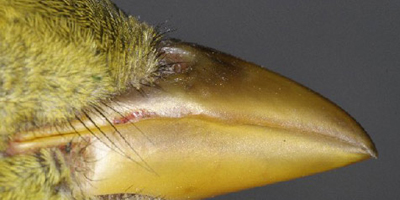
Scarlet Tanager Variant or Hybird
In 2003, we captured an unusual variant of a Scarlet Tanager.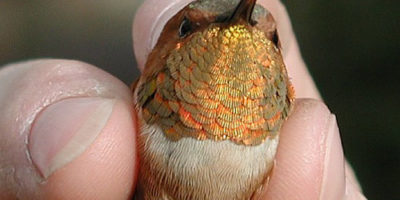
Rufous Hummingbird
An unusual capture in the Eastern United States, we have several captures (and great photos) of Rufous Hummingbirds from 2004-2007.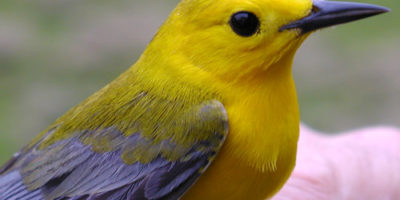
Prothonotary Warbler
Although we are included in the breeding range of the Prothonotary Warbler, only 7 have been banded at Powdermill.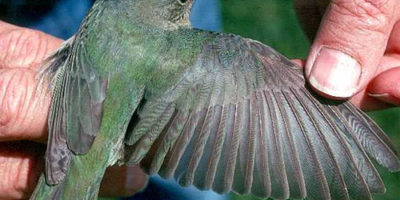
Painted Bunting
The only Painted Bunting caught at Powdermill is this SY male that was far off course when it was captured in 1996.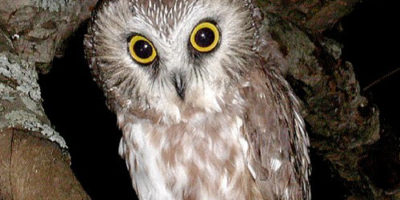
Owls – Saw-whet Owl and Two Recaptured Eastern Screech Owls
A hatchling year Saw-whet Owl poses for pictures and a two recaptured Eastern Screech Owls.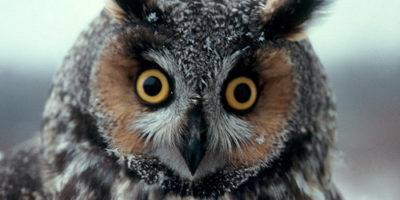
Long-eared Owl
We have only banded a single long-eared owl at Powdermill and it was a bird that was brought in from a local farm. Other than being a bit dazed, the bird was fine and was banded and released.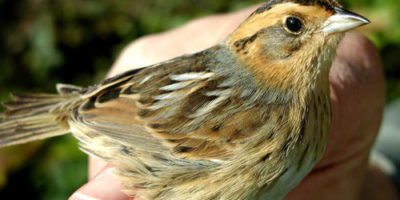
Nelson’s Sharp-tailed Sparrow
A Nelson's Sharp-tailed Sparrow (Ammodramus nelsonii) was banded at Powdermill Biological Station on 30 September 2000.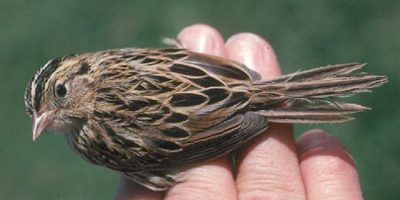
Le Conte’s Sparrow
A single Le Conte’s Sparrow was banded in 1991.
Kirtland’s Warbler
The rarest bird ever banded at Powdermill is this Kirtland’s Warbler captured in 1971 when there were estimated to be about 200 males in the global population of this species (~1,400 today).
Clay-colored Sparrow
The Clay-colored Sparrow is another rare bird at Powdermill with only 3 individuals ever being banded.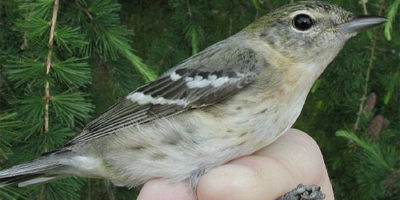
Hybrid – Possible Bay-breasted Warbler X Blackpoll Warbler
In May 2001, we banded a possible hybrid: Bay-breasted Warbler X Blackpoll Warbler.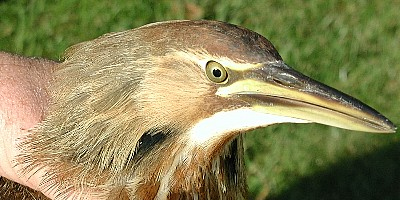
American Bittern
The American Bittern is a regular spring and fall migrant at Powdermill. But this bird, captured in 2001, is only the third one ever banded here (the others were in May 1986 and October 1998).
Avian Research Center
